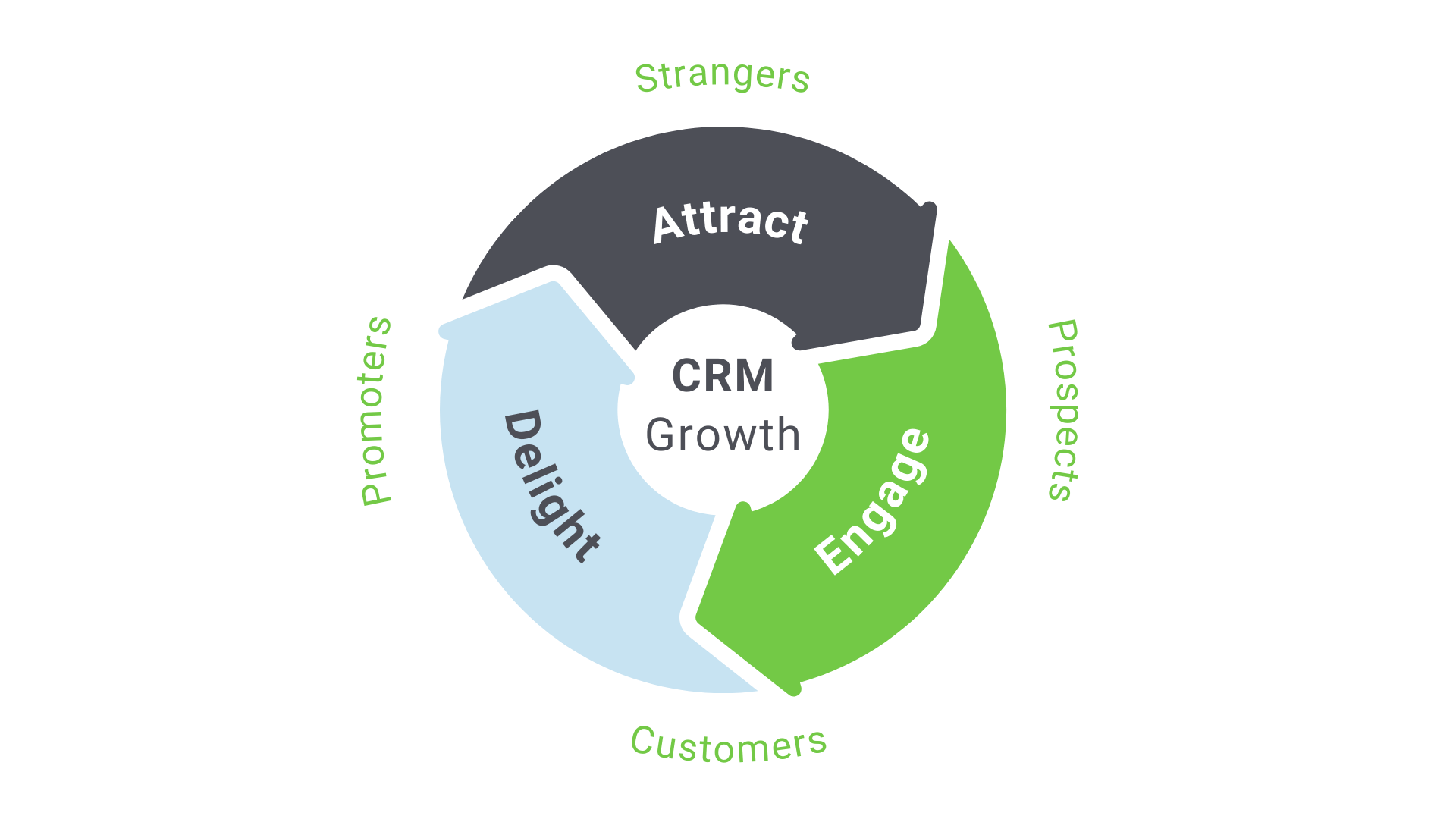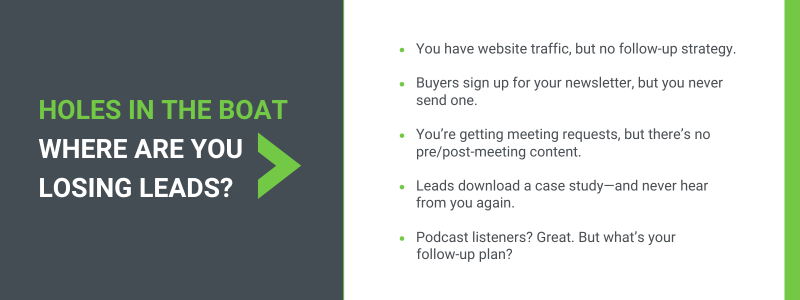Buyers are making decisions without you. If your content isn’t meeting them where they are, you’re just background noise. Here’s how to stay relevant, engage smarter, and actually close deals.
The way B2B buyers make decisions has changed—dramatically. They hold the power, conduct independent research, and expect brands to meet them on their terms. If your content isn’t aligned with how buyers think, search, and evaluate solutions, you’re already falling behind.
What This Article Covers:
- How buyers navigate the three key stages of their journey: Awareness, Consideration, and Decision.
- Why traditional funnels don’t work anymore—and what to do instead.
- How to position your brand as the trusted guide buyers want to follow.
- Why the flywheel model fuels long-term growth and advocacy.
By the end of this article, you’ll understand exactly how to meet buyers where they are, deliver the insights they crave, and turn engagement into conversion.
The Three Stages of the B2B Buyer's Journey
Buyers are in control, and their expectations are sky-high. You need to deliver value at every stage or risk losing them to a competitor who will. Here’s what that looks like:
- Awareness: The buyer identifies a problem and starts researching.
- Consideration: The buyer weighs solutions and shortlists providers.
- Decision: The buyer commits to a purchase—but not without reassurance.
Your job isn’t just to be found; it’s to be indispensable.
The Awareness Stage: Own the Problem Space
B2B buyers aren’t waiting for sales teams to educate them. They’re self-directed, using digital content to diagnose problems and explore potential solutions.
Here’s what you need to know:
- Half of all B2B spending now happens online, and 68% of buyers plan to increase digital purchases.
- 80% of B2B sales are digital. If you’re not showing up online with authority, you don’t exist.
To win this stage, you need more than blog posts—you need compelling, data-driven content that speaks directly to buyer pain points. Whitepapers, reports, and original research aren’t optional; they’re the baseline. If your competitors are more insightful than you, guess where your prospects are going?
The Consideration Stage: Prove You Belong on the Shortlist
Buyers don’t want generic sales pitches. They want tailored insights that validate their thinking and help them make smarter decisions.
Here’s what’s working:
- Case studies that highlight real impact. Don’t just list features—show measurable results.
- Comparison guides that cut through the noise. Buyers are actively comparing options; make it easy.
- Product deep dives that answer their toughest questions. The more you educate, the more you build trust.
With 80% of B2B buyers completing most of their decision-making before talking to sales, you don’t get a second chance to impress. Your content should make it crystal clear why your solution is the best fit.
The Decision Stage: Make It a No-Brainer
At this point, buyers are leaning in—but they need final assurances before they commit.
Eliminate friction and give them confidence with:
- No-risk trials or demos. Let them experience your solution firsthand.
- Transparent pricing. Hidden fees kill deals. Be upfront.
- A seamless buying process. If purchasing is complicated, you’re giving buyers a reason to hesitate.
The brands winning in 2025 remove every possible obstacle between consideration and conversion.
Is Your Content Solving the Right Problem?
Buyers aren’t looking for another vendor—they’re looking for a problem solver. If your content doesn’t immediately signal that you understand their pain points, they’ll move on.
Here’s how to make sure your messaging lands:
- Address the real issue, not just symptoms. Too many brands focus on features instead of digging into the root problems buyers are trying to solve.
- Get inside their decision-making process. What objections are they already anticipating? Speak to those before they even have to ask.
- Prove your relevance, don’t just claim it. Use data, case studies, and industry insights to back up every claim you make.
In 2025, buyers don’t have time for generic messaging. They want content that respects their intelligence, acknowledges their challenges, and gives them a clear path forward. If your content isn’t doing that, it’s time for a rethink.
Who’s Leading the Conversation? From Problem-Solving to Attraction
If you’ve positioned yourself as the problem-solver, the next logical step is making sure the right people find you. The best brands don’t chase prospects—they create the kind of content that naturally draws them in.

It’s not about who shouts the loudest. It’s about who delivers the most relevant, high-value insights. When buyers feel like they’re discovering your solution on their own, they become more engaged and more likely to convert.
Your storytelling should:
- Show empathy. Prove that you understand their challenges—not just in theory, but because you've been there and solved them before.
- Establish authority. Share original insights backed by data, experience, and real-world applications—not regurgitated industry noise.
- Guide buyers to their own conclusions. Help them connect the dots rather than pushing a hard sell. The more they feel in control, the more likely they are to trust you.
Instead of hunting for leads, become the brand they want to engage with. Your expertise, delivered in the right way, does the work for you.
The Flywheel Model: Attract, Engage, Convert—Fueling Every Stage of the Journey

If solving problems earns attention and attraction earns trust, the flywheel is what keeps momentum going. Unlike the outdated sales funnel, which treats customers as a one-time win, the flywheel recognizes that growth is continuous.
Every interaction—before, during, and after the sale—should add energy to your business, creating a self-sustaining loop of engagement and advocacy.
Here’s how the flywheel works at each stage of the buyer’s journey:
- Attract: It’s not about being everywhere—it’s about being in the right places with the right message. AI-driven insights, hyper-personalized content, and strategic thought leadership pull in the prospects who are already looking for what you offer.
- Engage: Buyers need depth, not fluff. Interactive content, data-backed case studies, and well-crafted nurture sequences help guide them toward a confident decision. You’re not selling—you’re proving value.
- Delight & Retain: The relationship doesn’t end at conversion—it’s just getting started. A seamless onboarding experience, consistent follow-ups, and ongoing customer success efforts turn new clients into long-term advocates who fuel future growth.
By aligning your content, messaging, and strategy with the flywheel model, you’re not just acquiring customers—you’re building momentum that keeps your brand thriving.
Ready to Lead in 2025?
The modern B2B buyer’s journey is no longer linear—it’s dynamic, research-driven, and self-guided. The brands winning in 2025 understand that their role isn’t to push buyers through a funnel, but to position themselves as the natural choice through value-driven content, seamless engagement, and a commitment to long-term relationships.
If your content isn’t meeting buyers where they are, you’re losing deals you never knew existed.
Now is the time to take a hard look at your strategy:
- Are you truly solving your buyers’ problems, or just listing features?
- Is your messaging helping buyers reach their own conclusions, or are you still trying to control the narrative?
- Does your content create momentum at every stage, or does engagement drop off after conversion?
Attracting, engaging, and converting isn’t enough. The best brands turn customers into advocates, building a flywheel that doesn’t just sustain growth—it accelerates it. If you want to lead in 2025, it’s time to stop chasing and start creating the kind of experience buyers seek out on their own.
Your Byers Are on a Journey—Are You Losing Them Along the Way?
B2B buyers don’t follow a straight path. They research, compare, and decide on their own terms.
If you’re not consistently communicating with leads, you’re letting them slip through the cracks—and into your competitor’s pipeline. That’s a lot of lost revenue.
ContentBacon helps you plug the leaks in your buyer’s journey.

Missed connections = missed revenue. If you’re not staying in touch, you’re wasting hard-earned leads.
Let’s fix that. ContentBacon will create the right content at the right time, so your CRM actually works for you.
Connect with us today!
